Michigan has lots of invasive species. These 5 bugs, diseases and plants concern state officials the most
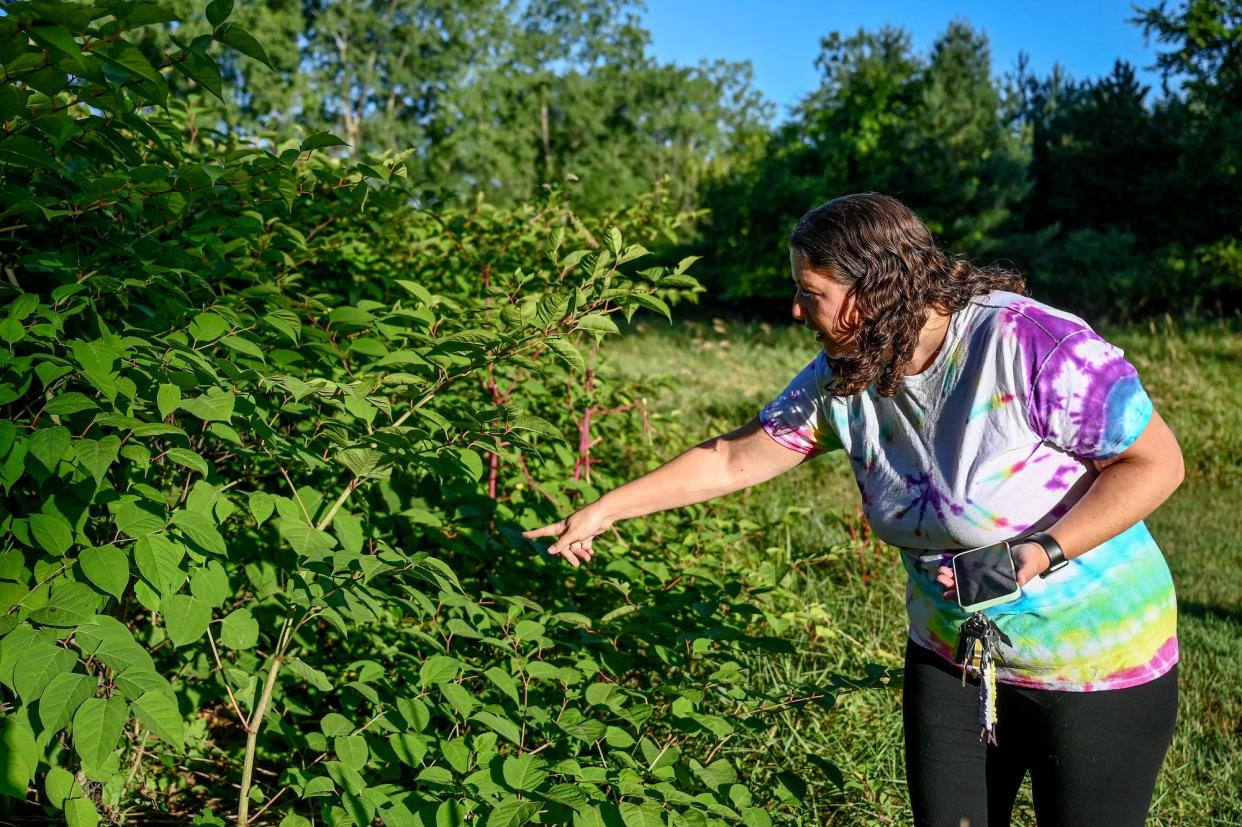
LANSING — Michigan's natural resources are under attack from a variety of invasive species, and winning the battle to prevent their spread could be as simple as familiarizing yourself with what they look like.
"We heavily depend upon the public to identify and report invasive species," said Joanne Foreman, the Invasive Species Program coordinator for Michigan's Department of Agriculture and Rural Development, Department of Environment, Great, Lakes and Energy and the Department of Natural Resources.
Among the 33 invasive species and diseases on the Michigan's watchlist, 18 have been detected in Michigan: balsam woolly adelgid, beech leaf disease, hydrilla, spotted lanternfly, lesser celandine (recently added), cinnamon vine, European water clover, hemlock woolly adelgid, Kudzu, mile-a-minute weed, New Zealand mudsnail, parrot feather, purple jewelweed, red swamp crayfish, stilt grass, water lettuce, water primrose and yellow floating heart.
"The watchlist are priority species that the state identified that pose an immediate and significant threat to Michigan's natural resources," Susannah Iott said, Michigan's Department of Agriculture and Rural Development's invasive species specialist, "They're either stuff that's never been confirmed or are in limited distribution or localized distribution."
While all species on the watchlist are concerning, the DNR said, five demand public attention now: balsam woolly adelgid, beech leaf disease, hydrilla, spotted lanternfly and lesser celandine.
Among those officials are watching closely are a pair of insects, the spotted lanternfly, detected in June, and balsam woolly adelgid, identified in the fall of 2023; a pair of plants, lesser celandine, found for the first time in July, and hydrilla, detected in September 2023; and beech leaf disease, which was discovered in the summer of 2022.
As part of the fight, The U.S. Department of Agriculture declared August tree check month for the Asian longhorned beetle, a species that hasn't yet been confirmed, but is a threat to Michigan's maple trees. The USDA suggests checking maple trees for indicators, such as, exit holes drilled into a maple's tree trunk or dying branches.
Once an invasive species becomes established, it can cost millions of dollars per year to keep it in check. Sea lampreys were first introduced into the Great Lakes basin in the early 1800s with the completion of the Welland Canal. Since the 1950s, the U.S. and Canada have spent more than $10 million per year to control them.
In addition, the Michigan Invasive Species Grant Program, awarded $3.6 million in 2024 for 31 projects to fight invasives, and more than $36 million over 10 years.
Species are added to the watchlist based on specific criteria: They must be threatening to Michigan's ecosystems, the economy and human health, and not widespread throughout the state, Iott said.
Michigan's watchlist is constantly being updated, and includes information on how to report species identified in your area, additionally it provides recommendations on how to prevent spreading an invasive species when traveling.
The five threats, and indicators to identify them, according to Michigan's Invasive Species Program:
Balsam Woolly Adelgid
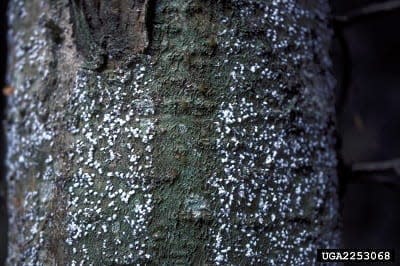
Native to Central America, balsam woolly adelgid is a 1-to 2-millimeter-long sap-feeding insect. They are not active insects, but can move via the wind, or being carried by wildlife, firewood or vehicles.
Distribution: Confirmed in Kent, Missaukee and Oceana counties.
Threats: They weaken true fir trees, such as, balsam, concolor (white) and Fraser firs, causing their branches to die over time, eventually killing the tree.
Indicators: Tiny white clusters on a tree trunk, swelling or distortion of twigs — the swelling is referred to as gout —branches turning a brick-colored red, and misshapen crowns of trees.
Beech Leaf Disease
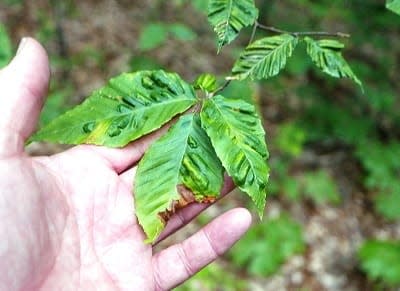
A microscopic worm, a nematode, has been associated with the disease. The disease has been difficult to understand and requires more research to trace its origin. It has been identified in American beech trees, which are native to Michigan. Thus far, the cause of the disease remains under investigation.
Distribution: Confirmed in Hillsdale, Lenawee, Macomb, Oakland, St. Clair, Washtenaw and Wayne counties.
Threats: After years with the disease, beech leaves begin to curl and distort and eventually die. Younger beech trees have been more vulnerable to the diseases damage.
Indicators: Thick stripes of dark green on leaves, curled or distorted leaves and reduced bud production or leaf loss.
Hydrilla
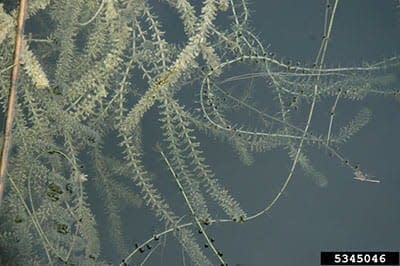
Native to central Africa, the aquatic plant is resilient in various settings, such as, springs, lakes, ditches, marshes or rivers. It has the advantage of tolerating low light conditions, and it grows underwater with slender, green, saw-toothed leaves that group together.
Distribution: Confirmed in small ponds in Berrien County.
Threats: A threat to bodies of water, hydrilla pushes out native vegetation and alters the ecology of the water it infests. In addition, it can interfere with fishing and boating.
Indicators: Slender stems that can grow up to 30 feet long with sharp edged leaves. Leaves have a central vein, are reddish, and the plant has white — sometimes red or brown — three-petaled flowers.
Spotted Lanternfly
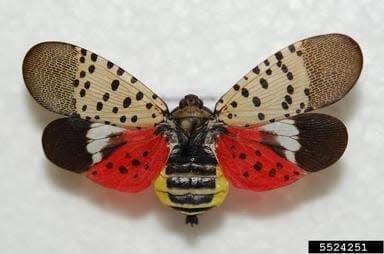
Native to eastern Asia, the insect feeds on fruits, favoring grapes, flowery plants and woody trees. It feeds on black walnut, river birch, willow, sumac, red maple trees and favors the tree of heaven, itself an invasive species. Adults grow about an inch long with wings and are most visible from August through September.
Distribution: Confirmed in Oakland and Monroe counties, these locations are actively being surveyed.
Threats: Damaging the plants they feed on, the insect sucks their sap and secrete "honeydew." The honeydew can kill the plant and attract other insects, negatively impacting the surrounding area, and interrupting crop harvests.
Indicators: In its adulthood, it has a grayish brown body with black spots. When its wings are open, it shows yellow black and red colors.
Lesser Celandine
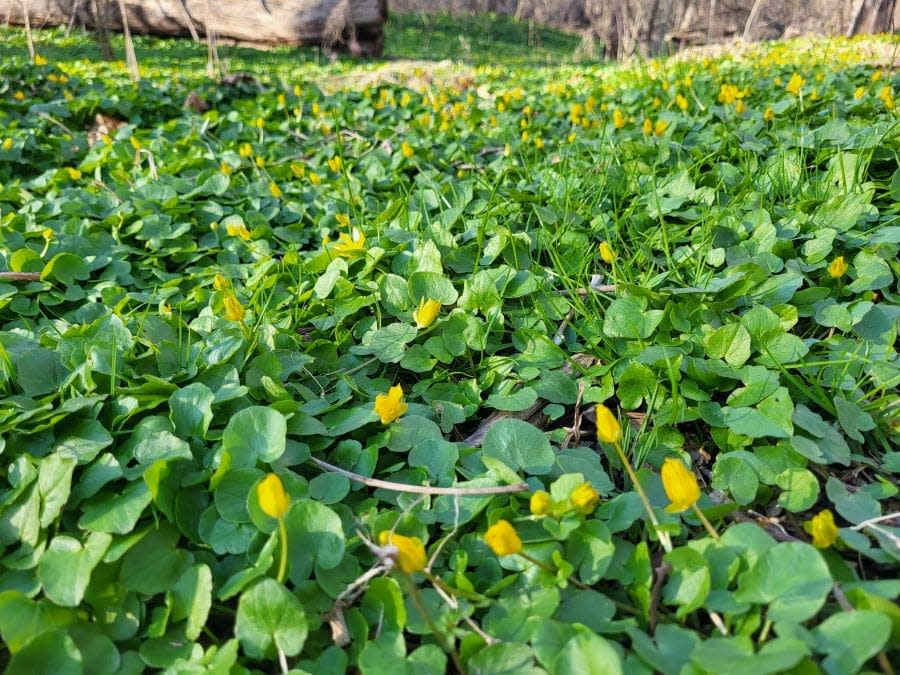
Native to central Europe, North Africa and the Caucasus Mountains, the plant covers forest grounds like a carpet. It has shiny, dark-green leaves that are heart-shaped.
Distribution: Confirmed in Clinton County in 1982, and now found in the Grand River watershed in mid-Michigan. This species was recently added to the watchlist so these locations are actively being surveyed.
Threats: Spreading quickly on forest floors, along trails, or any moist areas, the plant pushes out native species. When the plant lies dormant in the springtime it leaves behind patches of bare ground which may invite other invasive species.
Indicators: Small, yellow flowers with several petals among shiny dark green leaves that fan out close to the ground.
Contact Sarah Moore at smoore@lsj.com
This article originally appeared on Lansing State Journal: USDA, DNR ask public to watch for concerning invasive species
